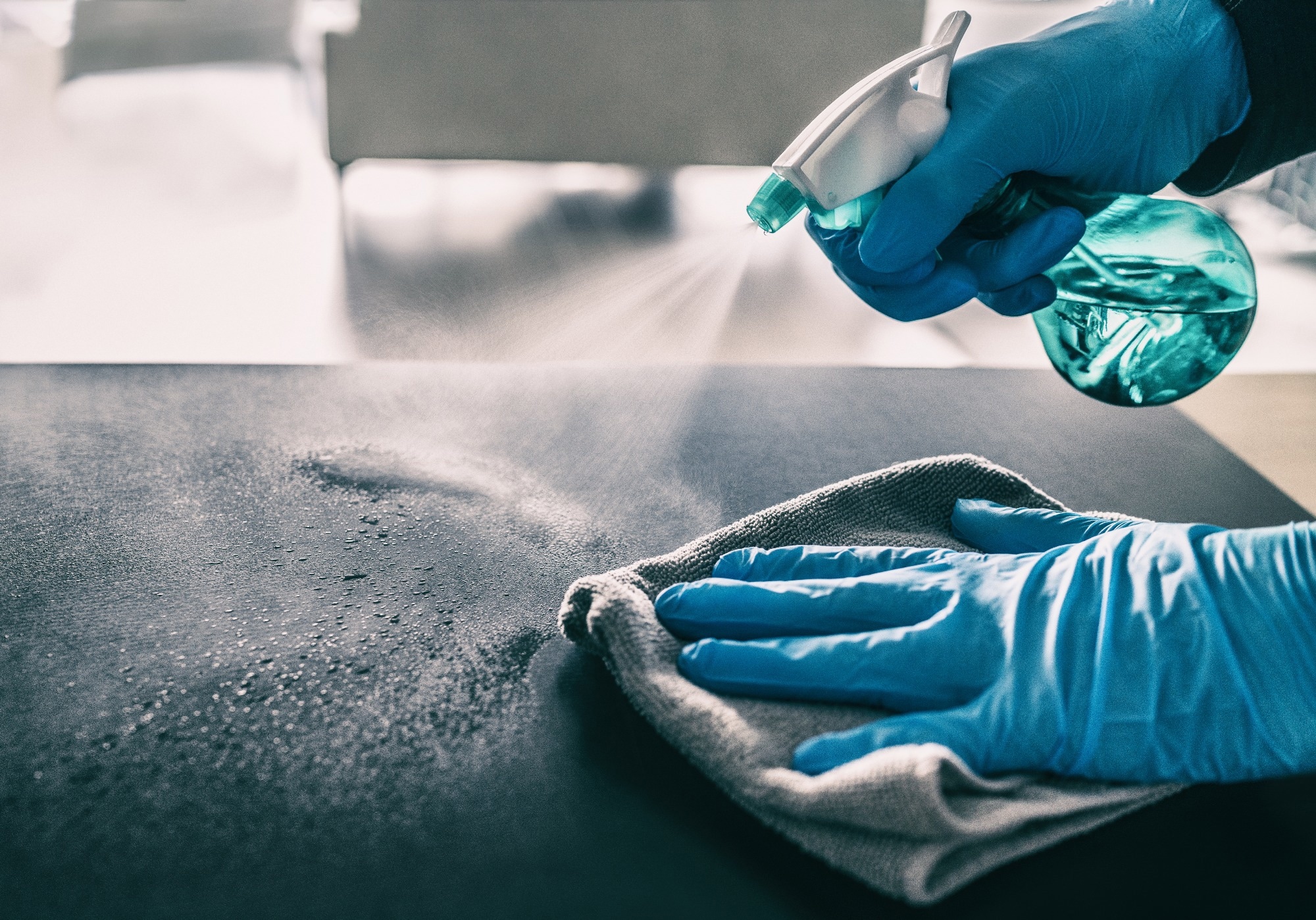Following the widespread transmission of the human monkeypox virus (MPXV) in 2022 throughout the world, scientists began studying different aspects of this virus to protect individuals from contracting this disease.
There remain few studies that have assessed the surface stability of MPXV. However, this information is extremely important to devise better hygiene measures and identify effective disinfectants to eliminate surface contamination, thereby preventing disease transmission.
 Study: Stability and inactivation of monkeypox virus on inanimate surfaces, Image Credit: Maridav / Shutterstock.com
Study: Stability and inactivation of monkeypox virus on inanimate surfaces, Image Credit: Maridav / Shutterstock.com
Background
Generally, MPXV is transmitted through direct and prolonged skin-to-skin contact. MPXV can also be spread through contact with infected body fluids or infectious lesions such as blisters, wounds, scabs, pustules, and rashes. Some studies have reported rare incidences of MPXV transmission through direct contact with objects or materials (fomites) contaminated with MPXV.
Recent studies have reported the presence of MPXV on household surfaces for at least 15 days after contamination. Other viruses that also belong to the Orthopoxvirus genus have also been shown to exhibit long-lasting surface stability.
There is a dearth of research regarding the efficacy of different disinfections in inactivating MPXV. Thus, it is crucial to understand the stability of MPXV on surfaces, as this will support the subsequent identification of disinfectants and biocidal agents capable of inactivating MPXV.
About the study
A recent Journal of Infectious Diseases study determined the stability of MPXV on stainless steel discs at varied temperatures. Different interfering conditions that mimic various environmental conditions were considered to further determine the antiviral efficacy of different commercially available surface disinfectants.
Decontaminated stainless-steel discs were inoculated with the viral solution, which contained nine units of MPXV and one unit of the interfering substance, such as sheep blood or bovine serum albumin (BSA). Subsequently, these discs were placed either at 4 °C, 22 °C, or 37 °C. MPXV was recovered from the stainless-steel discs at different time points following contamination for analysis.
A total of five different commercially available surface disinfectants were selected, and their efficacy against MPXV was assessed. Based on the active compounds, disinfectants were categorized as alcohol- (product I and II), aldehyde- (product III and IV), and hydrogen peroxide-based products (product V).
Study findings
A fitted Weibull distribution model was used to evaluate the initial decay rates of the MPXV on contaminated surfaces. In the first 24 hours post-inoculation of the viral solution on the stainless-steel discs, the initial virus concentration of 2.72 ×105 TCID50/mL remained unchanged. This observation was independent of interfering substances or temperatures.
A decline in viral titers was observed after five days upon incubation at 22 °C and 37 °C for both interfering substances. No viable virus was recovered from stainless-steel discs incubated at 37 °C with sheep blood and BSA interferences after six and seven days, respectively. Decay rates were estimated to be 4.82 and 5.36 days for the respective interferences.
No viable virus was recovered after days 10 (BSA) and 11 (sheep blood) from contaminated steel discs incubated at 22 °C. The matching decay rates were reported on days 7.38 and 6.47, respectively; however, the infectious virus could be recovered up to 30 days upon incubation at 4 °C.
A strong decline in viral titers was observed after 20 days in a viral solution containing BSA. A similar decline was observed much earlier in a viral solution containing sleep blood. These findings indicate that the surface stability of MPVX was highly temperature dependent as compared to the influence of interfering substances.
Alcohol-based disinfectants were highly effective in inactivating MPXV from surfaces, whereas aldehyde-based disinfectants could only lower MPVX infectivity. Additionally, a hydrogen peroxide-based disinfectant only moderately inactivated MPXV.
Conclusions
The surface stability of MPXV on stainless steel was found to be temperature dependent. Therefore, appropriate hygiene measures must be practiced to minimize the risk of transmission.
Alcohol- and aldehyde-based products were able to effectively inactivate MPXV present on inanimate surfaces. However, a similar outcome was not achieved using hydrogen peroxide-based products.
The findings of this study support the current recommendations of national authorities and the World Health Organization (WHO) that emphasize the need for the timely application of alcohol-based disinfectants to prevent MPXV transmission.
Journal reference:
- Meister, L. T., Bruggemann, Y., Todt, D., et al. (2023) Stability and inactivation of monkeypox virus on inanimate surfaces, The Journal of Infectious Diseases. doi:10.1093/infdis/jiad127